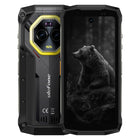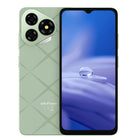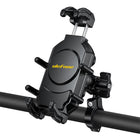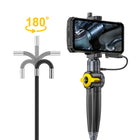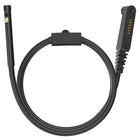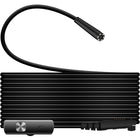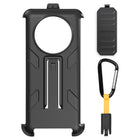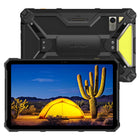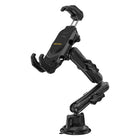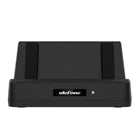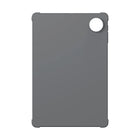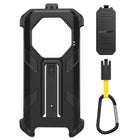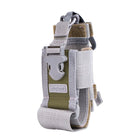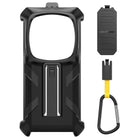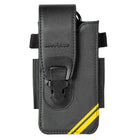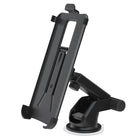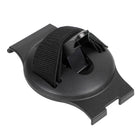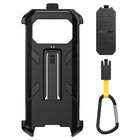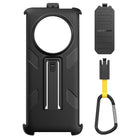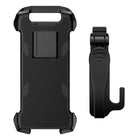Thermal Camera Applications Wildlife
Wildlife Thermal Imaging Camera Applications
See through complete darkness, fog, rain and even an animal's natural camouflage to accurately track and follow animals in their natural habitat. These thermal cameras are adapted for use outdoors, are completely silent running for covert observation and are ideal for applications ranging from hunting to simply viewing animals in the great outdoors for conservation purposes.
Why Are Thermal Cameras So Good For Detecting Animals?
How do you spot an animal through the choking darkness of the woods, or detect animals through even the most adverse of weather conditions? You could use nightvision equipment if you really wanted to, but these devices are generally much less effective than using a thermal imaging camera for wildlife detection.
In order to understand the answer to this question fully, you need to have a grasp of how a thermal imaging camera actually works. The basic explanation of a thermal camera's function is that these devices are used to produce images that show the heat around what the camera lens sees; in more technical terms, the thermal camera detects the IR radiation given off by an object, processes this information via complex algorithms and coverts the heat map into a visual image.
They work very different to conventional digital cameras which rely on light in order to craft an image. IR radiation is still a type of light, but is is usually completely invisible to the human eye and it is only through specialised equipment such as a thermal camera that we are able to detect the presence of IR light around us.
IR light - expressed via IR radiation - is generally given out by practically every object on earth at some level. Ridiculously hot things such as a blast furnace will output massive amounts of IR radiation but even something extremely cold - like an ice cube - still generates some form of IR radiation that can be picked up on by an infrared detector.
So what does this mean when you look at an image on a thermal camera? The image you see on these systems will vary depending on the application the camera is pointed at, with the hottest parts of the image expressed as either a white colouring (other palettes may be used, but this is the general default view) or a series of oranges and reds. Colder objects will appear as a series of blues, purples or other dark colouring. By looking at the thermal image it is easy to tell at a glance where the hottest objects are, making this an extremely effective tool for countless applications.
In the case of detecting wildlife, thermal imaging systems are particularly effective because they aren't affected by darkness or adverse conditions such as fog, rain and even snow. The thermal camera can be used to see through all of these things because it doens't need visible light in order to operate; instead it works to spot the IR radiation that the lens can detect and - since an animal will generally put out a lot of heat via IR emissivity - detecting the animal in question is easy because their thermal signature will clearly be displayed on the device. This makes all the difference between detecting an animal and them remaining hidden.
View Animals Regardless of Lighting & Weather Conditions
As previously mentioned, thermal cameras are great tools for seeing through complete darkness to detect body heat. They are also equally effective in bright sunlight; since they don't rely on the use of visible light to make an image, darkness or daytime don't have any effect whatsoever on the camera's abilities. Many animals can easily remain hidden during the daytime, so this technology proves extremely effective when out in the field.
The thermal camera is also a much more effective method of seeing through darkness than using nightvision equipment. While NV systems do offer some level of illumination they still rely on visible light to make an image, which means things can be easily missed. A thermal camera shows the world as heat and heat can't hide from the gaze of the devices' IR lens.
The same principle applies to the weather. If an area was completely choked with thick fog, the thermal camera would be able to be used in order to see through the area. It can also be used in rain, snow and various other weather conditions to see where you are going and also detect the presence of heat signatures nearby. These devices even work in extreme sunlight, again because they aren't affected by visible light.
On Safari with a FLIR Thermal Imaging Camera
Many years ago the word ‘safari’ was associated with big-game hunting, but today ‘safari’ is understood to be a trip for observing and photographing wildlife, most commonly in Africa. In fact ‘safari’ was originally a Swahili word meaning ‘long journey’.
Most safaris take place during the day, as in many African national parks it is not allowed to drive after dark and, in any event, it is extremely difficult to spot or photograph wildlife in total darkness unless you have a thermal imaging camera.
Powell Ettinger, founding editor of www.wildlifeextra.com, travels around the world to explore the local wildlife. Prior work includes working in the adventure travel industry. He shares his stories and educates over 130,000 website visitors a month from all over the world. On one of his last travels he found a way to enjoy the African wildlife at night as well as by day: a thermal imaging camera.
“Whilst talking to some friends about a forthcoming safari to Botswana and Swaziland, I explained them that I get up at 5:30 in the morning. It sounded odd to them to get up this early in the morning whilst on vacation. In Africa the nights are long however. It gets dark at 18.00 already. So there is only a limited amount of time to go out on safari” said Powell.
“When someone asked about the wildlife after dark, I made various comments about not being allowed to drive after dark in many national parks, not being able to see the wildlife and not being able to photograph it. Firing off a camera with a flash usually provides dreadful results, and quite often scares or enrages the wildlife away as well.”
Powell learned about thermal imaging cameras and how they produce a crisp image in the darkest of nights. They do not need any light whatsoever to produce a crisp image. He took both a FLIR PS24 and a TS24 Pro thermal imaging camera with him on his next safari and used it to search for wildlife at night as well as during daytime.
Both cameras produce thermal images of 240x180 pixels. The TS24 Pro is able to store still and video images on a removable SD card. The FLIR PS24 cannot.
Swaziland
It is not allowed to drive around in Botswana game reserves during the night. Given this difficulty Powell and his group also went to Swaziland’s Mbuluzi Reserve, neighbor to Hlane Royal National Park. Mbuluzi is 2,500 hectares of dry bush dissected by the Mbuluzi River, and contains plenty of common game such as giraffe, zebra, kudu, blue wildebeest, nyala, bushbuck, impala and warthog. As a predator free reserve, it is allowed to drive, and even walk at night.
“Using the FLIR PS24 thermal imaging camera, we drove around the reserve in the dark. Although the camera gives a remarkably clear image, it is not always practical to use it whilst on the move, so we stopped every few hundred yards and tried our luck”, Powell explained.
The PS24 thermal imaging camera has different image settings giving you the choice of seeing the images “white hot” or “black hot”. It is also equipped with the InstAlert™ mode that colors the hottest parts in the image red. “InstAlert is extremely useful when searching wildlife but the problem is that at the end of an African day, when the earth has warmed up during an entire day, practically everything turns red. I therefore preferred the “white hot” image mode just after sunset. Using the “white hot” image mode we did find some antelope, kudu or nyala, just off the track. The InstAlert mode is very effective after the earth has cooled down so we used this mode just before dawn.”
At 05:00 the next morning the group set out on foot in an area where giraffe are often seen. “Using the InstAlert function it didn’t take us long to pick up the red glow of a very long neck. A giraffe stood out very clearly in the darkness.” Powell elaborated.
Powell continued: “Later that evening, as the embers from the braai glowed in pit on the lawn in front of our lodge, I found the PS24 thermal imaging camera in my pocket, so I turned it on and swept the grass around the lodge. Much to my surprise, despite not having heard the faintest whisper, I noticed several impala grazing on the lush lawn just 40 yards from where I was sitting. Similar sweeps at regular intervals revealed a fine nyala bull, who lingered a long time, as well as what appeared to be an immature bushbuck, or perhaps a duiker of some sort.“
Botswana - See without being seen
Botswana is very different to Swaziland. Vastly greater numbers and variety of wildlife, but sometimes less accessible at night. However, some species are drawn to a campsite, where perhaps a piece of fruit might be left lying around, or a few scraps of leftovers might be available near the dishwashing area.
As is often the case with campsites in and around African national parks, vervet monkeys hang around looking for the chance to nab a biscuit or even just some orange peel. Occasionally a hyena may wonder through looking for scraps, and sometimes a shy genet may come down from the trees. However the tell-tale crash of a branch being ripped off is the easiest of noises to identify.
“FLIR PS24 revealed a few elephants feeding within 100 yards of the campsite. They were very relaxed and, in this case, not the slightest bit disturbed by our presence. The FLIR Systems thermal imaging camera helped us to see without being seen ourselves.” said Powell.
Powell continues; “Using thermal imaging enhanced our wildlife watching in two main ways. Without the thermal imaging cameras, we would not have known if there was anything around us in the dark at all. Much of the wildlife that is around at night keeps extremely quiet, as you would expect from animals that are constantly under threat of being killed and eaten by predators. We were amazed by just how much wildlife we found in close proximity to our lodge in Swaziland. Having a thermal imaging camera enabled us to record and identify what was there.”
“On other occasions, we knew from the noise around us that there was something out there, in the dark, but we had no idea what.” Powell concludes: “Another use for the equipment was to enhance our safety. If you need to go out of the tent or lodge during the night, it can be reassuring to check the neighborhood for hyena before you leave.”
Choose Your Wildlife Thermal Camera
FLIR systems are currently leading the way in the development of wildlife thermal cameras with their FLIR Scout series. These portable, lightweight systems are built for use in the great outdoors and come in several different models for use in detecting the presence of wildlife.
*Products with Thermal Imaging:
Armor 27T pro,Armor 25T Pro,Armor 25T,Power Armor 18T Ultra,Power Armor 19T, Power Armor 18T, Armor 11T 5G, Armor 9.







